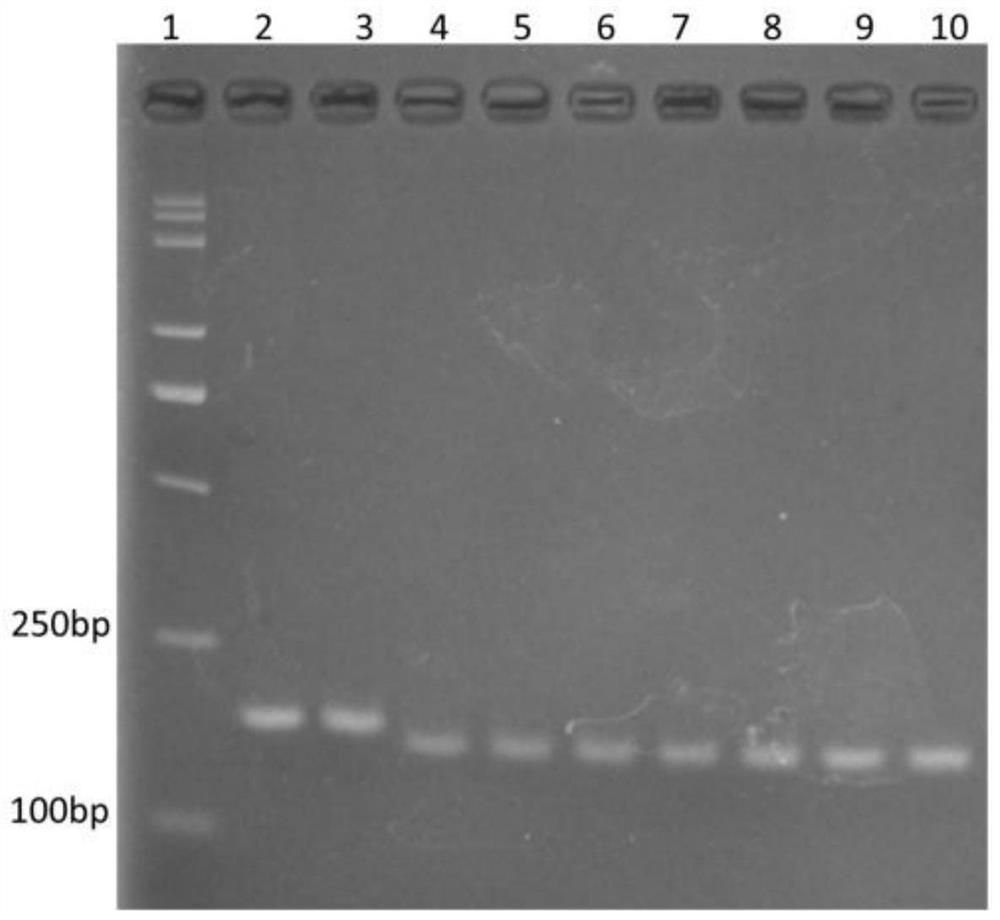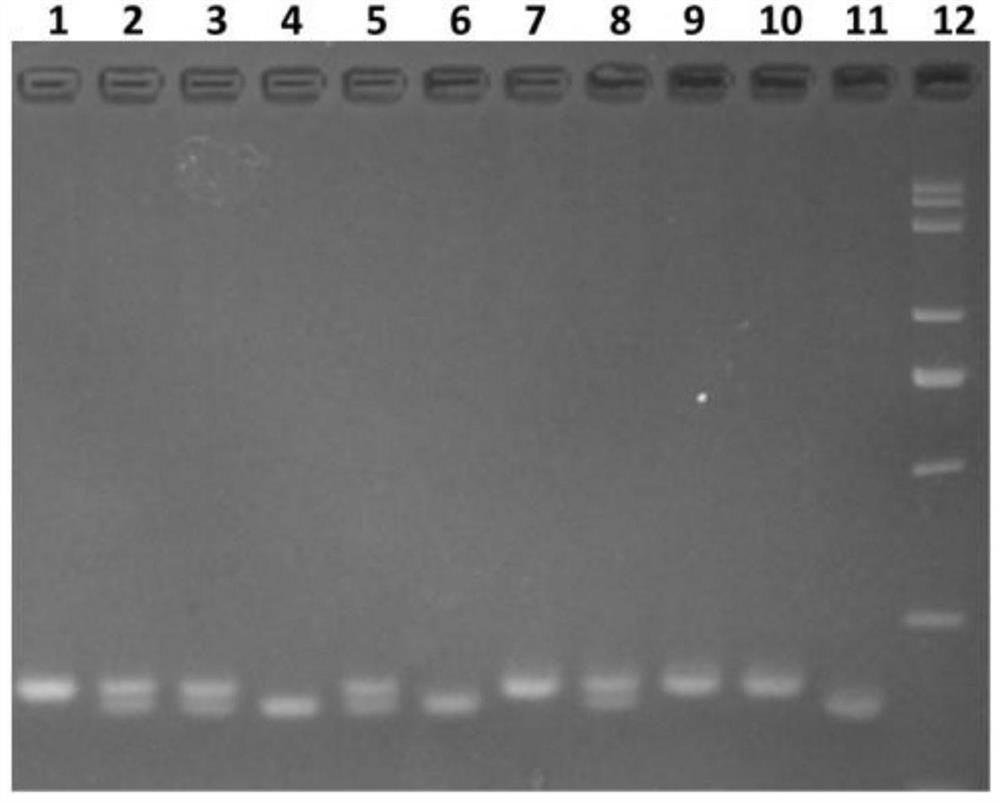A kind of breeding method of rice with low cadmium accumulation
A low-accumulation, rice technology, applied in the field of breeding of low-cadmium-accumulation rice, can solve the problem that materials cannot be used quickly, and achieve the effects of alleviating cadmium pollution, liberating labor, and keeping output unchanged.
- Summary
- Abstract
- Description
- Claims
- Application Information
AI Technical Summary
Problems solved by technology
Method used
Image
Examples
Embodiment 1
[0058] Breeding method of cadmium low accumulation rice, including the following steps:
[0059] (1) As a donor, 9311 rice is receptified as a donor.
[0060] (2) Hybridize the donor and receptor materials to obtain hybrid F1 generation seeds, and F1 generation seed self-giving F2 generation seed;
[0061] (3) Take detection using a specific Indel molecular marker in the F2 generation population, and the plants in which the homogenous OSNRAMP5 gene deletion is screened in the F2 group, that is, cadmium low accumulation rice material.
[0062] The method for detecting the specific Indel molecular marker is the same as in Example 1, and the specific Indel molecular marker includes a forward primer F (name P5-C8F) and reverse primer R (name P5-C8R):
[0063] P5-C8F: 5'-caatccaagacccgggggcatgat-3 '(as shown in SEQ ID NO.1);
[0064] P5-C8R: 5'-gcgccccataggattagttga-3 '(shown in SEQ ID No.2).
[0065] For the separation progeny generated in step (3), the specific Indel molecular marker...
Embodiment 2
[0070] Breeding method of cadmium low accumulation rice, including the following steps:
[0071] (1) As a donor, non-cadmium, low accumulation of rice varieties;
[0072] (2) Hybridize the donor and receptor material to obtain a hybrid F1 seed, F1 generation seed and receptor material return to obtain BC1F1 generation seed;
[0073](3) In the BC1F1 group, the specific Indel molecular marker is used to detect. In the BC1F1 population, the plants in which the hybrid OSNRAMP5 gene deletion is screened, and the resulting procedural group is detected by a specific Indel molecular mark. Screen A plant in which a homozygous OsnRamp5 gene is deleted, that is, cadmium low accumulation rice material.
[0074] The method for detecting the specific Indel molecular marker is the same as in Example 1, and the specific Indel molecular marker includes the following primer pairs:
[0075] P5-C8F: 5'-caatccaagacccgggggcatgat-3 '(as shown in SEQ ID NO.1);
[0076] P5-C8R: 5'-gcgccccataggattagttga-3 ...
Embodiment 3
[0082] Breeding method of cadmium low accumulation rice, including the following steps:
[0083] (1) As a donor, non-cadmium, low accumulation of rice varieties;
[0084] (2) Hybridize the donor and receptor material to obtain a hybrid F1 seed, F1 generation seed and receptor material return to obtain BC1F1 generation seed;
[0085] (3) In the BC1F1 group, the specific Indel molecular marker is detected. In the BC1F1 population, the plants in which the heterozygous OSNRAMP5 gene deletion is screened, and the receptor material is returned to the receptor material. The deletion of the transduction of OSNRAMP5 gene lacking plants, back-to-generation groups of retirement, and self-trails are detected by specific Indel molecular markers. Finally, the self-separation separation of plants in the deletion of homozygous OSNRAMP5 genes, that is, cadmium low accumulation rice material .
[0086] The method for detecting the specific Indel molecular marker is the same as in Example 1, and the...
PUM
 Login to View More
Login to View More Abstract
Description
Claims
Application Information
 Login to View More
Login to View More - R&D Engineer
- R&D Manager
- IP Professional
- Industry Leading Data Capabilities
- Powerful AI technology
- Patent DNA Extraction
Browse by: Latest US Patents, China's latest patents, Technical Efficacy Thesaurus, Application Domain, Technology Topic, Popular Technical Reports.
© 2024 PatSnap. All rights reserved.Legal|Privacy policy|Modern Slavery Act Transparency Statement|Sitemap|About US| Contact US: help@patsnap.com










